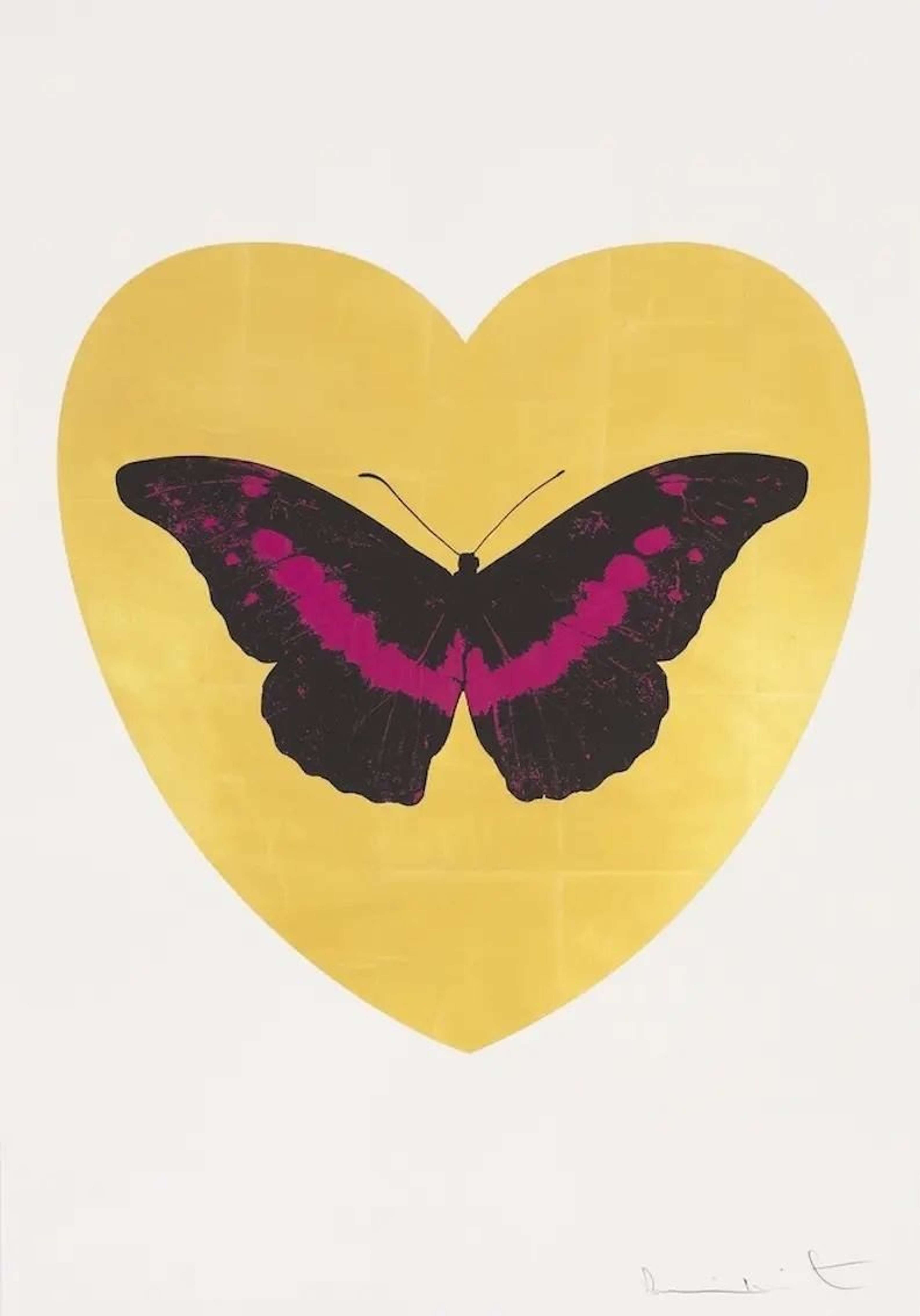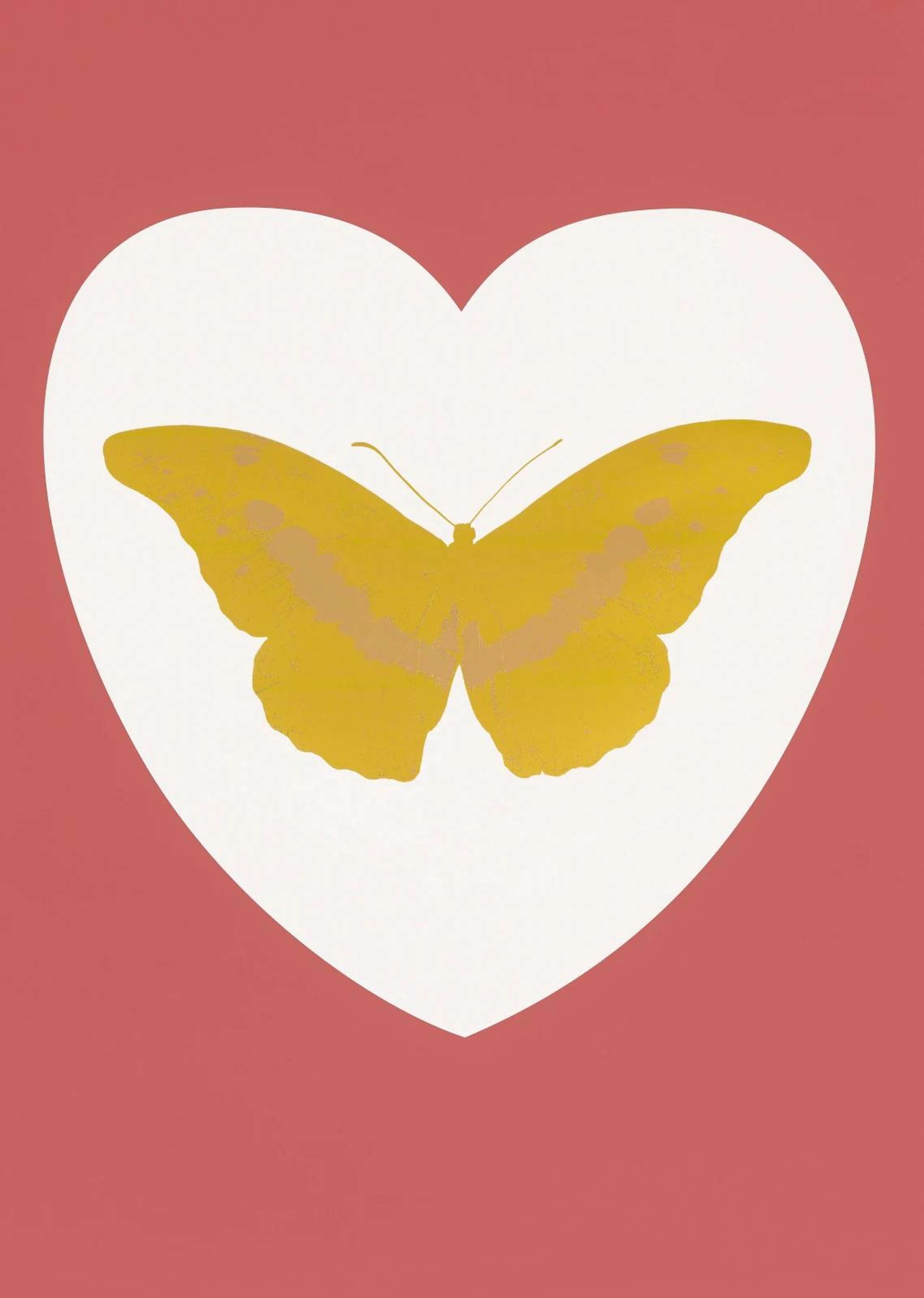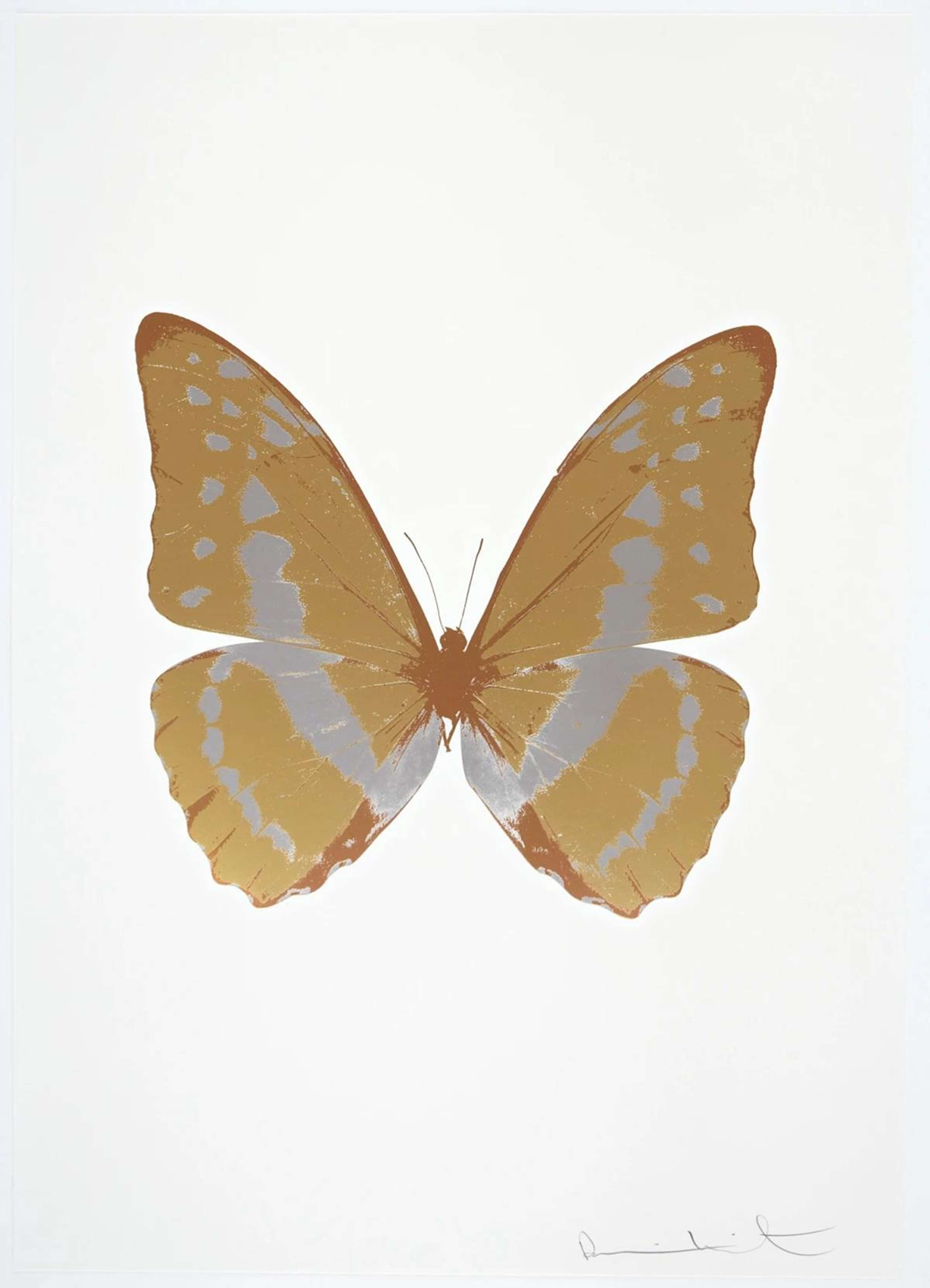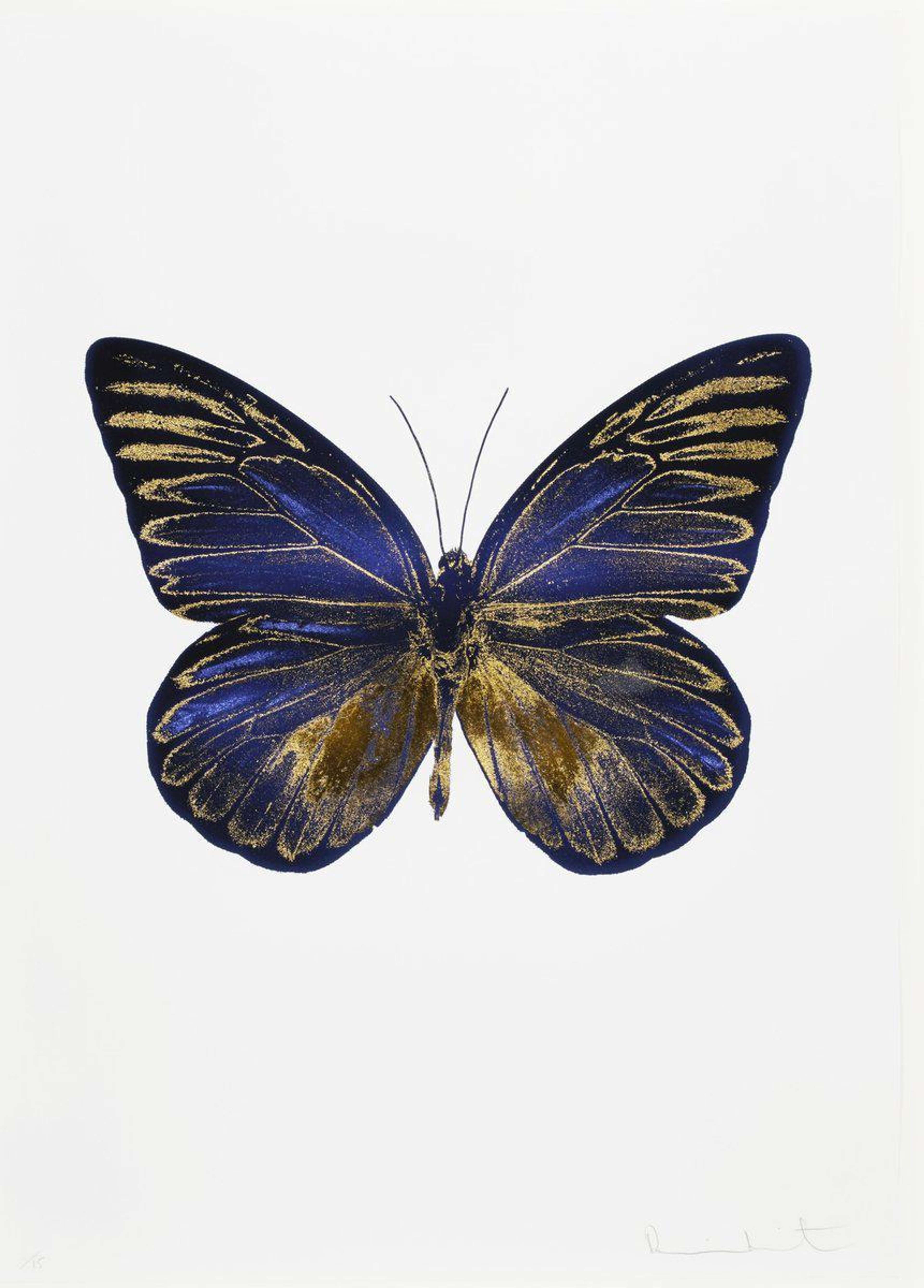 Love Is All You Need © Damien Hirst, 2016
Love Is All You Need © Damien Hirst, 2016
Damien Hirst
677 works
The butterfly is one of Damien Hirst's best known motifs in his ouevre, and the Love series is full of them.
Hirst’s obsession with butterflies began in the 1980s.
 All You Need Is Love Love Love © Damien Hirst, 2009
All You Need Is Love Love Love © Damien Hirst, 2009Hirst’s long-standing obsession with the butterfly motif was conceived in the late 1980s, when he saw flies become stuck on primed canvases whilst he was working on the fly and cow’s head sculpture A Thousand Years from 1990.
Butterflies represent growth, change, life and death.
 Big Love © Damien Hirst, 2010
Big Love © Damien Hirst, 2010The butterfly is among Hirst’s most famous motifs, emblematic of the fleetingness of life and the romance of death.
The name of this series is inspired by the Beatles.
 Love Is All You Need © Damien Hirst, 2016
Love Is All You Need © Damien Hirst, 2016The Love series takes the optimistic sentiments of the Beatles for the prints’ titles like All You Need Is Love Love Love and fuses this with Hirst’s subtle reflections on mortality.
The Love series has connections to Hirst’s 'The Four Elements (Who’s Afraid of Red, Yellow, Green and Blue)' from 2005.
 I Love You (gold leaf, black, fuchsia) © Damien Hirst, 2015
I Love You (gold leaf, black, fuchsia) © Damien Hirst, 2015The Love series is reminiscent of Hirst’s series of paintings entitled The Four Elements (Who’s Afraid of Red, Yellow, Green and Blue) from 2005. These earlier works were the first example of the artist’s use of painted butterflies.
These prints are supposed to look like an accident.
 Be Considerate © Damien Hirst, 2018
Be Considerate © Damien Hirst, 2018The screen prints in the Love series show the butterflies as though trapped on fly-paper. Works such as this were intended to ‘look like an accident of paint with butterflies stuck on it,’ according to the artist.
Hirst sees the butterfly image as a ‘birthday-card kind of idea’.
 I Love You (white, red, cool gold, poppy red) © Damien Hirst, 2015
I Love You (white, red, cool gold, poppy red) © Damien Hirst, 2015Hirst sees the butterfly motif as an idealised image that is separate from the hairy-bodied insect itself: “Pretty butterflies and pretty flowers and love. The image is so drenched in all that kind of stuff that the real thing doesn’t exist. When you see the real thing, it’s hardly Playschool, which I quite liked. Because I’d called In and Out of Love and my ideas of love are really similar. I do have the birthday-card kind of idea, and then there’s the harsh reality of life.”
For Hirst, the motif of the butterfly is historically significant.
 I Love You (white, coral, oriental gold, cool gold) © Damien Hirst, 2015
I Love You (white, coral, oriental gold, cool gold) © Damien Hirst, 2015Hirst describes the butterfly as being used by the Greeks to depict Psyche, the soul, and in Christian imagery represents resurrection. This gets to the heart of the human experience, according to Hirst.
Every butterfly in these prints is unique.
 The Souls III (hazy gold, silver gloss, rustic copper) © Damien Hirst, 2010
The Souls III (hazy gold, silver gloss, rustic copper) © Damien Hirst, 2010The Love series shows an array of butterflies captured against boldly rendered hearts. Every butterfly in the square composition is unique and is depicted in bright, contrasting colours to stand out against the plain backdrop.
The Love series demonstrates Hirst’s interest in ‘universal triggers’.
 The Souls IV (oriental gold, burgundy, leaf green) © Damien Hirst, 2010
The Souls IV (oriental gold, burgundy, leaf green) © Damien Hirst, 2010Speaking of his obsession with butterflies Hirst has explained, “I think rather than be personal you have to find universal triggers: everyone’s frightened of glass, everyone’s frightened of sharks, everyone loves butterflies.”
Hirst’s butterflies are hyperrealistic for a reason.
 The Souls I (imperial purple, oriental gold) © Damien Hirst, 2010
The Souls I (imperial purple, oriental gold) © Damien Hirst, 2010The Love series represents Hirst’s interest in combining hyperrealism with artificial colour and traditional methods of art making. Hirst has exemplified his skill in dealing with photographic themes in his work, notably beginning with the Fact painting series in 2000. Of this obsession with the photographic Hirst has explained, “Art has been in constant battle for hundreds of years with every other kind of image-making…newspapers are supposed to be about facts and truth, and you believe you get a true view of the world from these images when you don’t: they’re completely fake.”

